Authentic Bolognese: A Classic Recipe

Bolognese - a timeless classic. This dish can be prepared quickly or with longer preparation and cooking time. The taste is hearty, creamy, and offers a variety of great flavors.
Introduction:
Welcome to the seventh post of FlavoursByJan. Today, the dish will be one of my all-time favorites. When I was a child and came home to my parents preparing Bolognese, I knew I was going to have a great time. Bolognese is something I could eat three portions of and still crave that last bite, directly out of the pan. Even though it's a pretty simple dish, there are many ways to create it. This was my first time preparing it this way, and probably my best. I took extra care since I wanted to share it with you all.
I also had the opportunity to invite two of my friends, and they enjoyed it just as much as I did. Please forgive me for my choice of pasta. I was so focused on the sauce that I didn't give enough thought to buying the right pasta – although I think this one fits quite well. It absorbed a lot of the great sauce and was easy to cook al dente.
Why and where from?
As I mentioned, this dish has evolved over several years. Back in the day, I used to just sear onions with meat and then add celery and carrots. This led to uneven cooking times since celery and carrots normally take the longest, while the meat can be enjoyed after a short time. I then proceeded to add red wine, tomato sauce, and a bit of pasta water.
This time, however, I decided to take a different approach: preparing the meat and vegetables in separate pans, then combining them in the final steps.
The key to this dish is to really work with the fond at the bottom of the pan after searing the meat, steam the vegetables rather than searing them, add red wine to both the meat and vegetables, and extend the cooking time to reduce the sauce to the perfect texture.
I found a pretty close version of this dish on Gustini and Chefkoch, although they are not 100% similar.
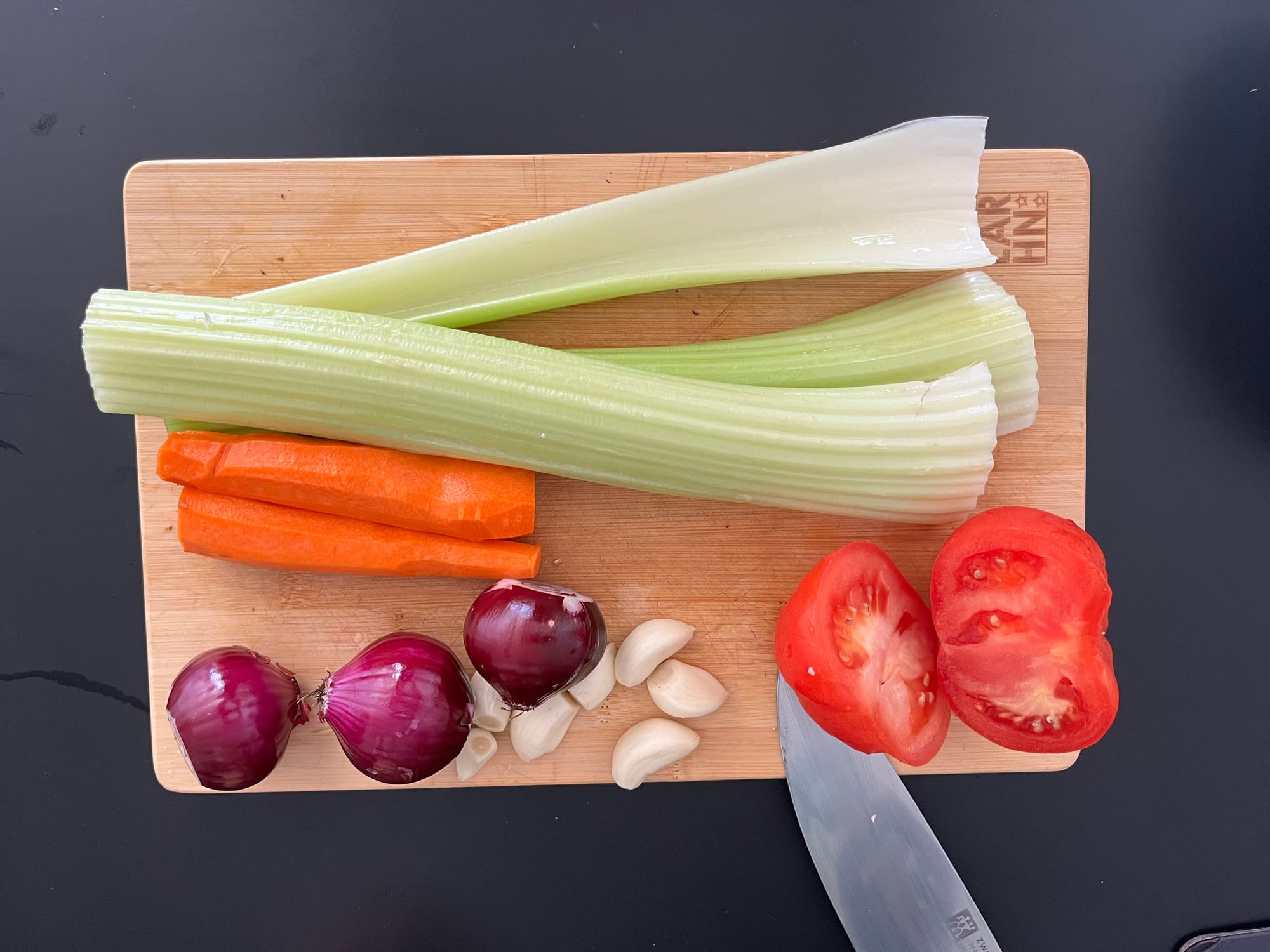

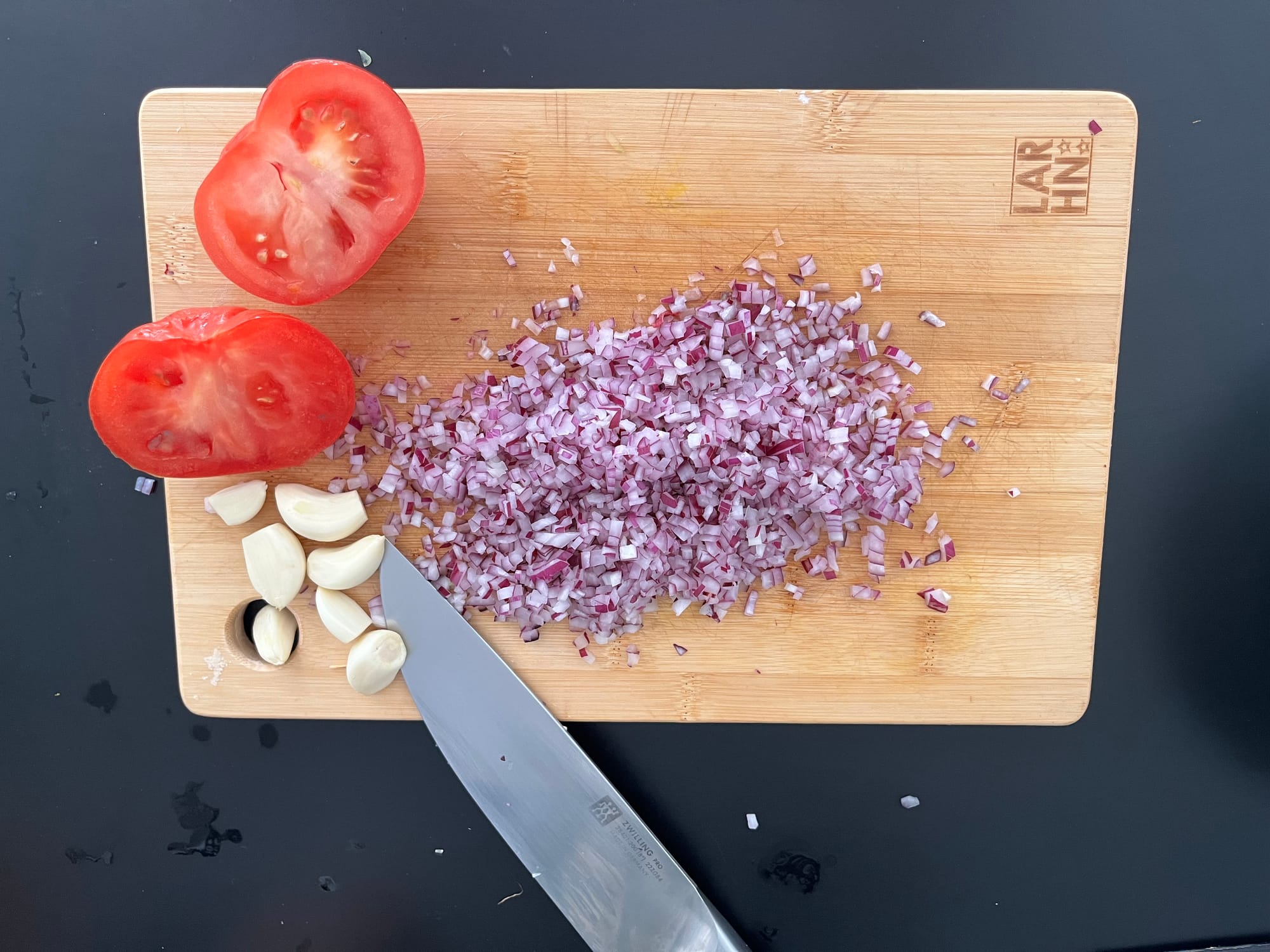
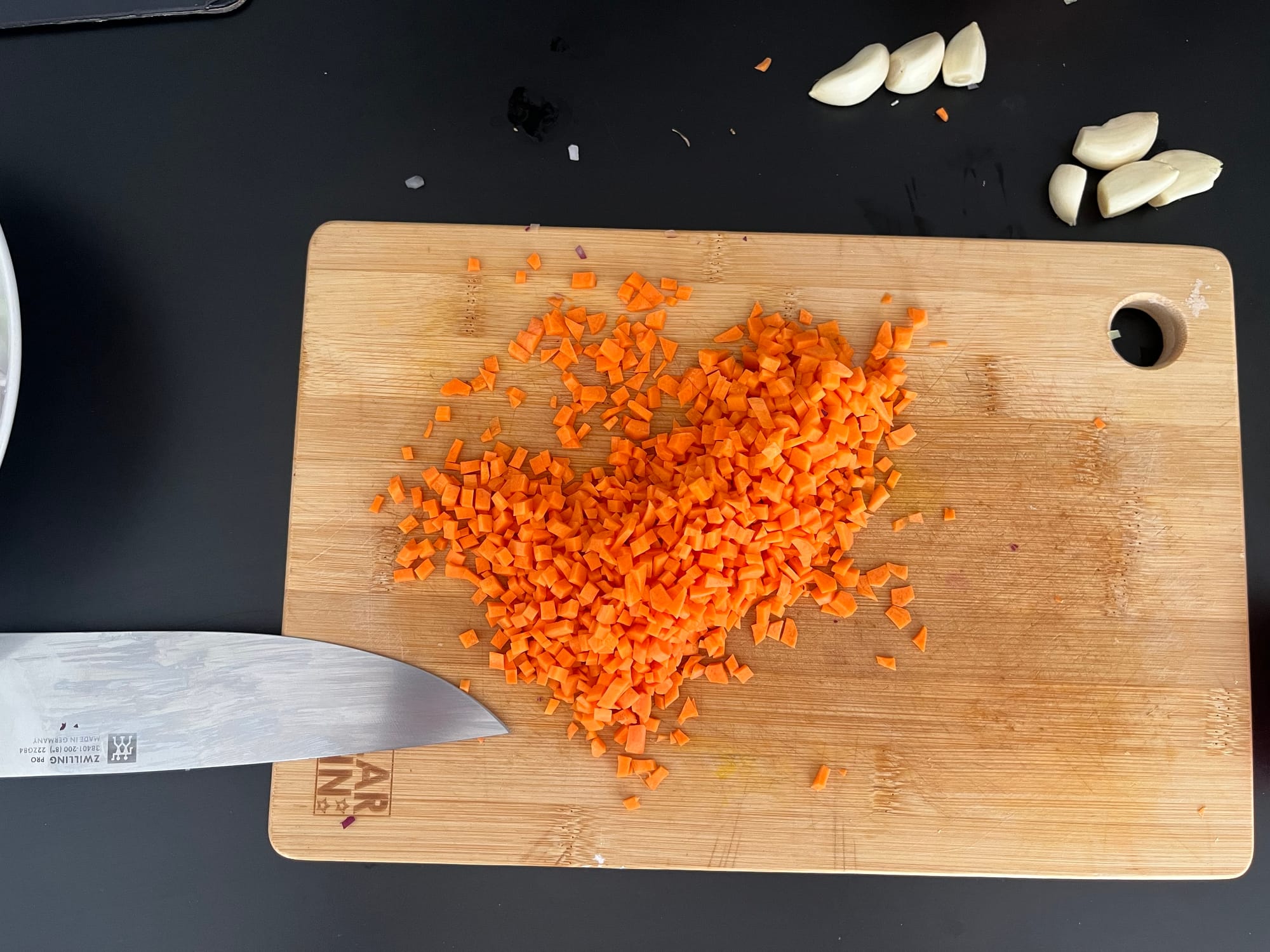

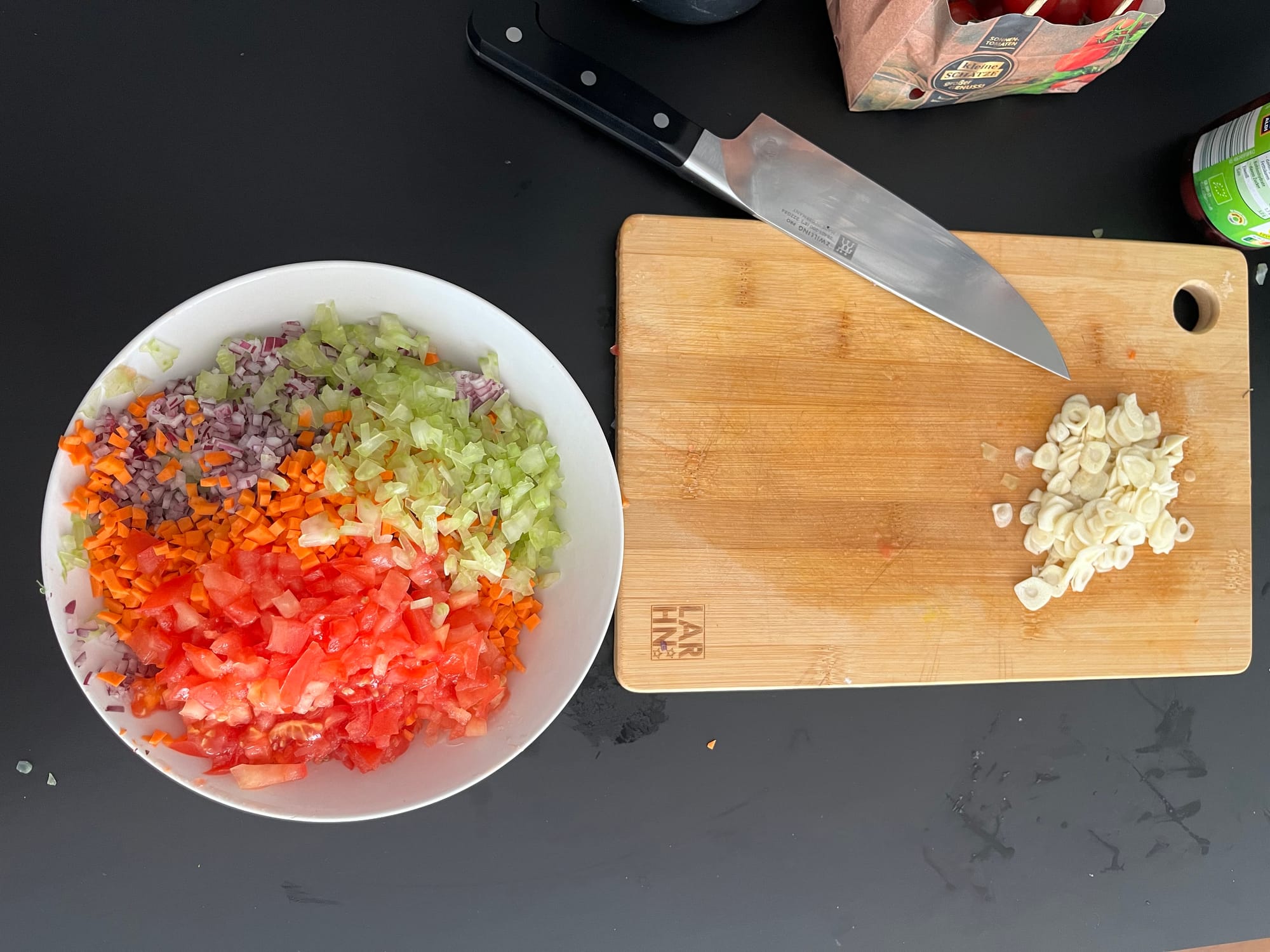
Recipe:
For the Sugo:
• 600 gr of mixed mince
• 200-300 ml of red wine
• 200-300 ml of milk
• 400 gr of tomato sauce (whole tomatoes)
• 3 pieces of garlic
• Salt and pepper
• Chili flakes
• For the Sofritto:
• 150 gr of butter
• Bit of olive oil
• 3 onions
• 2 carrots
• 3 stalks of celery
• 3 pieces of garlic
Preparation:
The most important part of a Bolognese is the so-called "Soffritto": For this, add a generous chunk of butter (about 150 g) and a little olive oil (to prevent the butter from burning) to a pan. Peel and finely chop onions, carrots, and celery, and slowly cook them on a low flame (at least 30 minutes) until the vegetables become translucent and soft. It's important that the vegetables sweat rather than fry. I added that many pictures because I was really proud of my chopping skills. I hope you noticed.
Meanwhile, fry the minced beef in another pan until it takes on a deep color. Then, deglaze with a splash of red wine, allowing everything stuck to the bottom of the pan to loosen. Important: Depending on the amount of sauce, add about 200-300 ml of milk, which envelops the minced meat and imparts a mild flavor.
Once the meat has come to a boil with the red wine and milk, add the canned tomatoes, preferably sweet-tasting tomatoes such as San Marzano plum tomatoes. Once everything has come to a boil again, add the "Soffritto". Sliced garlic and crushed red pepper can now be added. Season with sea salt and freshly ground black pepper to taste. The Bolognese should simmer for as long as possible. Ideally, around 5 hours. But it should simmer for at least 2 hours. If necessary, add some water or light broth from time to time to prevent it from burning
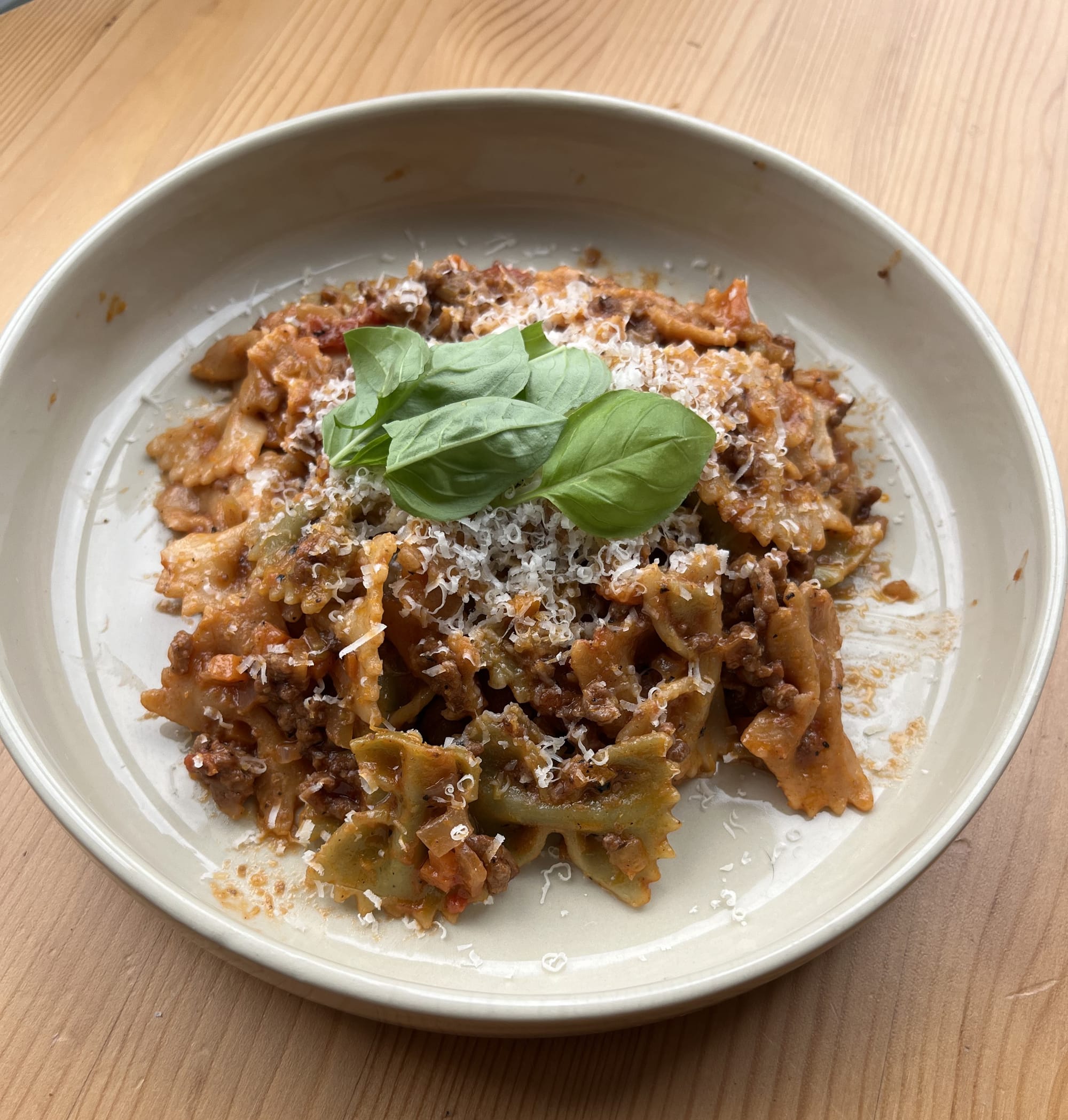
Thank you for joining me on this culinary journey! Wishing you happy cooking adventures and flavorful moments ahead.
